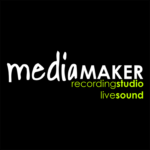Forums › Forums › dLive Forums › dLive General Discussions › Custom Control for dLive is here!
Tagged: containers, Custom Control, ipad, nest, template
- This topic has 82 replies, 31 voices, and was last updated 2 years, 12 months ago by
 Rombout.
Rombout.
-
AuthorPosts
-
2019/06/10 at 9:38 am #84488
 Nicola A&HKeymaster
Nicola A&HKeymasterWe’ve just released Custom Control, a customizable, cross-platform control app, providing bespoke control over Allen & Heath dLive installed audio systems.
Have a look here for more information, videos, and links to the apps and editor: https://www.allen-heath.com/custom-control/2019/06/10 at 1:30 pm #84494RS
ParticipantInteresting!
Could that be used for the still missed musician monitor control app? Have to look into it…2019/06/10 at 3:10 pm #84503 ArtParticipant
ArtParticipantNoice!
2019/06/10 at 3:15 pm #84504 dcongdonParticipant
dcongdonParticipantReally interested in checking this out for the mobile phone app
2019/06/10 at 3:30 pm #84505RS
ParticipantAlready tested it.
Quite some programming but very flexible. Build your own monitor app!2019/06/10 at 3:52 pm #84507 Nicola A&HKeymaster
Nicola A&HKeymasterYou could indeed build a personal monitoring app. Multiple layouts (e.g. controlling different Aux mixes) can coexist in the same config file, assigned to different user profiles. So for example User 1 controls Aux 1 etc.
2019/06/10 at 6:57 pm #84512 EspenParticipant
EspenParticipantiOS app not available in Norway? Cant find it in App Store…
2019/06/10 at 7:08 pm #84513 ThatComplicatedMidiGuyParticipant
ThatComplicatedMidiGuyParticipantVery Cool! This is exactly what I’ve been doing with Touch OSC since the dLive was released. …only better!
I’m already working on several layouts for a few different applications. I noticed a bug with Mains fader though: It doesn’t look like it actually controls the mains fader. Did I miss something?
One other thing I would love to see in the next revision, especially as this is geared toward the installation market: is the ability to limit output values for faders. I do this in Touch OSC for instance, to only allow “unskilled,” users to move a fader from -inf to a **maximum** of 0dB for the entire fader throw. It prevents all kinds of issues in most environments where things need to be relatively dummy resistant.
2019/06/10 at 7:24 pm #84514 ThatComplicatedMidiGuyParticipant
ThatComplicatedMidiGuyParticipantOne other thing that would be useful is a shortcut enable/disable setting for faders so that you could, say, double-tap to set a fader to 0. (…maybe triple tap as an extra precaution?)
2019/06/10 at 8:21 pm #84516Anonymous
InactiveDoes the configuration live in the mix rack or the device?
2019/06/10 at 10:09 pm #84519 ThatComplicatedMidiGuyParticipant
ThatComplicatedMidiGuyParticipantYeah, the layouts are stored in console, which is pretty cool. It makes sense from an administrative perspective, and I would imagine that saves from having the blowouts you sometimes see with MixPad. (Layouts just get completely messed up every once in a while, it’s an open ticket w/ support.) You just have to build the layouts, then push them to the console from the editor.
I also like that you can assign specific layouts for specific user logins, although it means application is limited for use as an IEM controller due to the limited number of logins available.
2019/06/11 at 7:21 am #84523 Nicola A&HKeymaster
Nicola A&HKeymasterthe ability to limit output values for faders
Set the Audio Taper of a fader object to Off, and the Min Gain / Max Gain properties will be displayed.
2019/06/11 at 4:51 pm #84533Anonymous
Inactivethe limited number of logins available.
What is the limit?
2019/06/11 at 7:21 pm #84535 ThatComplicatedMidiGuyParticipant
ThatComplicatedMidiGuyParticipant@ Nikola, thanks! That’s exactly what I needed. It didn’t occur to me the fader setup was identical to ip8. duh.
@ Mr X – 10 user logins per console.
2019/06/12 at 7:38 am #84549 Nicola A&HKeymaster
Nicola A&HKeymasterRemember you can also have different interfaces serving the same user profile, depending on the device type. E.g. user ‘AV guy’ can have a couple of faders or preset recalls on a phone, some more control on a tablet, and more comprehensive routing and metering on a desktop machine. Although this doesn’t help with the personal monitoring application discussed above, it’s a great feature to have in installations.
You can even create Scene to Layout dependencies. Basically have interfaces which are only displayed when a specific Scene (or selection of Scenes) is displayed.
-
AuthorPosts
- You must be logged in to reply to this topic.